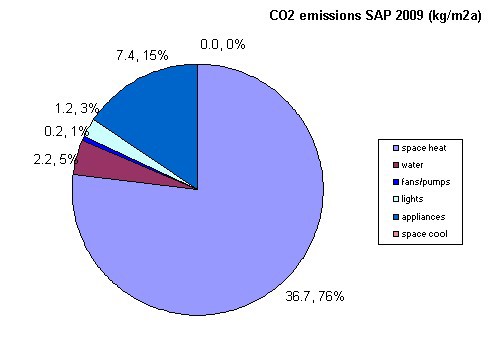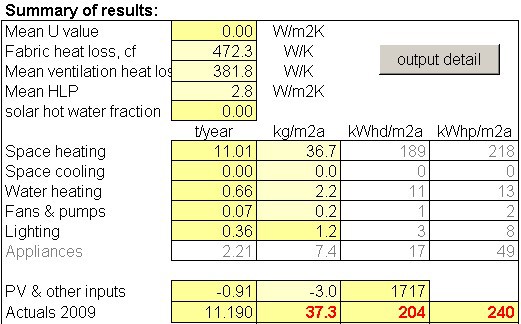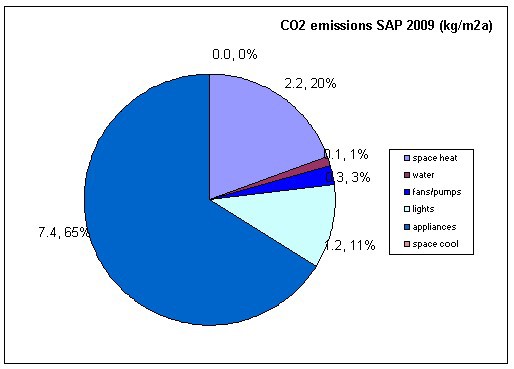Brief: produce a set of recommendations for reducing the energy use and carbon emissions of a large typical British dwelling by 40%, 60% and 85%.
The building is rectangular, with an estimated plan depth-to-width ratio of 1.6, and an assumed average floor height of 3,0 m. The attic is lower, and so the number of storeys has been estimated to be 3.5. The glazing ratio factor has been estimated to be 0.11 (32,9m² Window area / 300 m² gross floor area).
The house, located in at No. 17 St Augustine’s Road, Camden, has been the subject of a renovation project designed by Urban Buzz (Low energy Victorian house) aiming towards reducing the carbon footprint by 85%.
Description:
Starting from the initial carbon emission estimation, various improvements were made to the building fabric and the way energy is used and produced.
· The Baseline Case. Initial CO₂ emissions - 62.3 kg/m²a
Building fabric - poor airtightness and lack of insulation. Boiler: 65% efficient. CO₂ emissions caused by Space heating (85%), Appliances and water heating (13%) and Lights (2%).



Target 1 – 40% reduction of CO₂ emissions to 37.4 kg/m²a
· Improved thermal performance of building fabric: 50 mm of insulation added to external building elements; windows and doors - replaced with air-filled double glazing, 12 mm gap, U-value = 2.8 Wm2K;
· Improved airtightness - “pressurisation test result” factor lowered to 25 m/h at 50 Pa.
· Boiler efficiency - increased to 75%.
· Ventilation performance - changed to “medium” performance.


Target 2 – 60% reduction to 24.9 kg/m²a
· 100 mm insulation;
· Lower U-value double glazing windows – 2.2 Wm2K;
· Insulation to internal walls;
· Boiler efficiency – 85%.


Target 3 – 85% reductions of to 9.3 kg/m²a
· Double glazing (Argon filled) – U-value 1.8 Wm2K;
· Energy-efficient light bulbs;
· PVs using solar energy to produce electricity and water heating;
CO2 emissions - 14,4 kg/m²a (76,9%)
Wood-pellet CHP boiler 85% efficiency – annual CO2 emissions drop to 1.4 kg/m²a. (building becomes practically carbon neutral)




